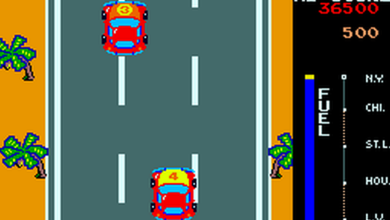These are two games that look worlds apart from one another – they are of very different genres and released for opposing consoles, but both Tekken Tag Tournament and Mario Kart: Double Dash share one thing in common has made them both live on long after most games become worn out.
Article by Jack Ford
Both games bucked decades of convention for their respective genres and had players choose two characters to play as at the same time. The likely aim of this was to encourage more use of multiplayer and co-op, but the decision made for greater depth and longevity in single-player mode at the same time. Exploring all the different combinations made for seemingly limitless gameplay.
Since its first incarnation back in 1994, Tekken had been a premiere fighting series with all of the fights being one on one until the first spin off game, Tag Tournament. A launch title for the PS2 in 2000, it had a lot more new features than just improved graphics going for it.
As well as giving players the advantage of having two different fighting styles, the mechanics of TTT brought about new tactical elements to each fight: when is the right moment to change characters? Which of the two you have chosen stands the best chance against either of your opponents?
It’s not just what you do, either. You might be getting into a rhythm against one opponent, only for a new one to come in. The fact that fighters can change in an instant brings a complete new dynamic to the game.
In addition to the new, TTT does a lot with the old as well. Graphically it is as well designed and detailed as any Tekken game had up to that point and the game music is well-composed and memorable. No longer was music in a fighting game just beats in the background, now they were as big a part of the game as the mechanics and visuals. This was arguably when Tekken came of age.
Mario Kart had existed on the SNES, N64 and GameBoy Advance, but when Double Dash arrived on the Gamecube in 2004, it looked to impress in the series’ first sixth generation outing, which saw a lot of new features introduced which would become series staples. Every character had their own personal pickup to use in races and, while every previous game had characters race in a standard kart, Double Dash was the first to provide a variety of different vehicles to choose from.
They didn’t just leave it at that, either. Double Dash also has the weight and speed of each character effect the performance of the kart. This saw some characters can only being able to ride in certain classes of cars, others lowering either the car or their own performance in the race.
Picking the perfect pair is a skill of Double Dash, but the good news about that is there is no right or wrong answer. As having a definite winning combination would defeat the USP of this game, the developers have gone without one. There are many partnerships with a lot of potential, but they are all equally good as one another,
It’s not just the characters that make Double Dash stand out in the series. Graphically it’s very impressive for a game of its era, which allowed for some of the best and most inventive tracks in any Mario Kart game. From the obstacle-strewn Mushroom Bridge to the constantly shifting terrain of both Daisy Cruiser and Dry Dry Desert, it’s easy to see why future games in the series would ape the tracks of Double Dash.
When both games were released they were met with big sales and praise from both critics and fans, but seemingly not enough to ensure them the legacy they both deserve. Tag Tournament is not seen as a full instalment of the Tekken series, though it spawned a sequel more than a decade on, but it is as good as any of the other games. In the case of Mario Kart, where each new edition of the game is in essence and update of the last one, Double Dash is probably the only one in the series that is actually subversive.
Some would say it is dangerous to mess with long-established and successful genre conventions, especially when so many games have done so in the past and suffered as a result. In the case of both Tag Tournament and Double Dash, the change was done so intricately and so well that it ended up improving the formula.
It may first appear like a gimmick, but here, allowing two playable characters at once made these games memorable and, coming at the time they were released, showed power of a new generation of consoles and that the possibilities were endless.
By Jack Ford








![RetroArch Starter Guide [2025] RetroArch Starter Guide [2025]](https://i.ytimg.com/vi/PwJEIYZXLgw/maxresdefault.jpg)

